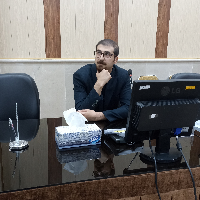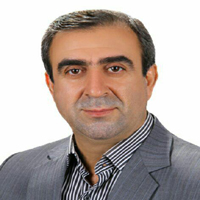A Discourse Analysis of Fereydoun and Zahak Story Based on Modern Historicism
Author(s):
Article Type:
Research/Original Article (دارای رتبه معتبر)
Abstract:
Abstract
Literary criticism is the analysis of the text's semantic layers based on theories that are mostly drawn from other fields of the humanities. The new historicism, which was established by Stephen Greenblatt in the late 1970s and early 1980s, is one of the most current theories in this area. Modern historicism holds that literature and history both have an impact on one another, in contrast to conventional historicism, which speaks of the one-sided influence of history on literature. Modern historians contend that literature does more than just reflect history; rather, the link between history and literature is dialectical rather than reflective. Based on current historicism, library, and document studies, and using a descriptive-analytical approach, this study has looked into and analyzed the story of Fereydoun and Zahak, and has offered a new interpretation of it. According to the study's findings, the conflict between the Iranian discourse and the non-Iranian discourse (Fereydoun and Kaveh) in this story is driven by power, which ultimately leads to the dominance of the Iranian discourse. The characters of this story are each representative of discourse in the story community. Iranian discourse is on the margins and out of power at first, while non-Iranian discourse is dominant and in power. However, by the end of the story, the situation has changed. The plot is driven by the conflict between Iranian and non-Iranian discourse on power.
Research
Discussion of Results and
Literary criticism is the analysis of the text's semantic layers based on theories that are mostly drawn from other fields of the humanities. The new historicism, which was established by Stephen Greenblatt in the late 1970s and early 1980s, is one of the most current theories in this area. Modern historicism holds that literature and history both have an impact on one another, in contrast to conventional historicism, which speaks of the one-sided influence of history on literature. Modern historians contend that literature does more than just reflect history; rather, the link between history and literature is dialectical rather than reflective. Based on current historicism, library, and document studies, and using a descriptive-analytical approach, this study has looked into and analyzed the story of Fereydoun and Zahak, and has offered a new interpretation of it. According to the study's findings, the conflict between the Iranian discourse and the non-Iranian discourse (Fereydoun and Kaveh) in this story is driven by power, which ultimately leads to the dominance of the Iranian discourse. The characters of this story are each representative of discourse in the story community. Iranian discourse is on the margins and out of power at first, while non-Iranian discourse is dominant and in power. However, by the end of the story, the situation has changed. The plot is driven by the conflict between Iranian and non-Iranian discourse on power.
Introduction
The story in question was composed as a poem in one of the most sensitive historical situations, that is, the time when the Arab element thought itself superior to Iran and Iranians. The ideological pressures from the Arabic discourse have become more sophisticated throughout this time, and they now want to marginalize the Iranian discourse, which takes the shape of the Shu'ubiyya movement. The space for Shu'ubiyya's Iranian discourse has been constrained by these restrictions from the Baghdad-based authority and its close allies in Iran, notably the Ghaznavid empire. In such a circumstance, Ferdowsi uses the story of Fereydoun and Zahak, which is rich in elements of battle and resistance, to rekindle Iranians' spirit of battle and resistance against the notion of Arab superiority. This story reflects the struggle between Iranian discourse (Feryedoun and Kaveh) and non-Iranian discourse (Zahhak); the struggle that existed during Ferdowsi's period and the Shu’ubiyya movement has been in conflict with what was against Iran and Iranians. Freyedoun, an Iranian aristocrat, is related to Jamshid. Zahak pulled Jamshid down from the kingdom and killed him. Since then, Fereydoun and all other Jamshidis have lost their position in the society and privileges. Fereydon's fight against Zahak is motivated by three different reasons, considering the fact that Zahak also murdered his father Abtin and the Bermaye cow that Fereydon fed on as a child. The reasons were 1) national motivation (saving Iran from the oppressive non-Iranian element), 2) class motivation (restoring the social position and privileges of the Jamshidian class), and 3) personal motivation (taking revenge on Zahhak for murdering Abtin and Barmayeh cow). As a patriotic Iranian, Fereydoun finds Zahak's existence intolerable and feels it is his national responsibility to rebel against the foreign, alien, and oppressive forces that have imposed themselves on Iran.Materials and Methods
In this study, an effort is made to analyze the Fereydoun and Zahhak battle story in Shahnameh using modern historicism and to provide a novel interpretation of it. The research is based on new theories and schools, text analysis, and criticism. By using library and documentary studies, as well as descriptive and analytical approaches, we have attempted to offer a novel interpretation of the text under discussion and respond to the following research questions: 1) What are the dominant (in power) and marginal (outside of power) discourses, and what is their connection to power? 2) Why did Ferdowsi favor a particular discourse? 3) What was the reason for it and how did this favoritism occur? 4) What is the relationship and similarity between the story of Fereydoun and Zahak with the history of Ferdowsi's time? 5) What genre and group are the target audience of the story? And 6) what is the intertextual relationship of this story with other Persian literary texts?Research
Findings
The study's findings demonstrate that the struggle between the Iranian discourse (represented by Fereydoun and Kaveh) and the non-Iranian discourse in this story is motivated by a desire for power which ultimately leads to the dominance of the Iranian discourse. The characters of this story are each representative of discourse in the story community. Other discourses are on the margins and outside of power, but Zahak's discourse is dominant and in power. The effort and struggle between these marginal discourses to gain power and the center gave rise to the story, and these conflicts between the marginal discourses and the dominant discourse (Zahak) serve as its driving force. The element of conflict in the story is represented through disobedience, rebellion, and war. As a poet, Ferdowsi has clearly taken the side of the marginal discourses centered on Fereydoun. Ferdowsi is inclined toward the usage of positive adjectives and phrases. He sets his supported discourses apart from other discourses in this way.Discussion of Results and
Conclusions
Instead of focusing on the characters' specific historical actions, this story attempts to explore the universal nature of man by narrating the behavior of the characters in a way that makes the reader think about the historical patterns of the members of their society or even the general nature of mankind. As a result, any autocratic, murderous, and cruel dictator may be likened to Zahhak, and every person fighting for liberation from tyranny can be compared to Kaveh. In addition, there are similarities between the characters in the story and historical figures from Ferdowsi's era that are worthy of consideration and come about as a result of how we interpret the story. For instance, Zahhak and the Abbasid caliphs are comparable in terms of race, autocracy, and animosity toward the Iranian race. In other words, the murder, repression, and brutality of the Abbasid caliphs have been demonstrated in the form of the myth of Zahhak. Additionally, there are similarities between Abu Mansour Abd al-Razzaq and Abtin in the Zahhak stories; both of them were murdered by Iranians and are of Iranian ancestry and royal descent. That is, Abtin was murdered by Zahhak Tazi and Abu Mansour by Abul Hasan Simjur of Arabic descent. Additionally, both of their children seek revenge; Fereydon rises against Zhahak, and Mansour, the son of Abu Mansour Abd al-Razzaq, rises against Simjurians and Samanians, and is murdered in this manner.Keywords:
Language:
Persian
Published:
Textual Criticism of Persian Literature, Volume:15 Issue: 3, 2023
Pages:
1 to 16
magiran.com/p2631601
دانلود و مطالعه متن این مقاله با یکی از روشهای زیر امکان پذیر است:
اشتراک شخصی
با عضویت و پرداخت آنلاین حق اشتراک یکساله به مبلغ 1,390,000ريال میتوانید 70 عنوان مطلب دانلود کنید!
اشتراک سازمانی
به کتابخانه دانشگاه یا محل کار خود پیشنهاد کنید تا اشتراک سازمانی این پایگاه را برای دسترسی نامحدود همه کاربران به متن مطالب تهیه نمایند!
توجه!
- حق عضویت دریافتی صرف حمایت از نشریات عضو و نگهداری، تکمیل و توسعه مگیران میشود.
- پرداخت حق اشتراک و دانلود مقالات اجازه بازنشر آن در سایر رسانههای چاپی و دیجیتال را به کاربر نمیدهد.
In order to view content subscription is required
Personal subscription
Subscribe magiran.com for 70 € euros via PayPal and download 70 articles during a year.
Organization subscription
Please contact us to subscribe your university or library for unlimited access!




